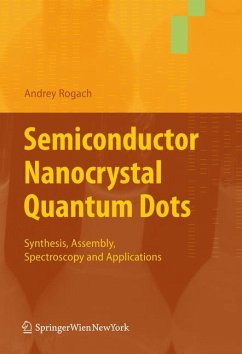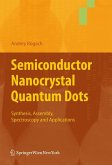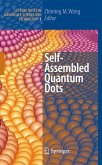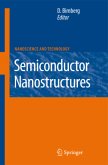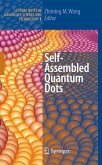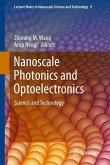This is the first book to specifically focus on semiconductor nanocrystals, and address their synthesis and assembly, optical properties and spectroscopy, and potential areas of nanocrystal-based devices. The enormous potential of nanoscience to impact on industrial output is now clear. Over the next two decades, much of the science will transfer into new products and processes. One emerging area where this challenge will be very successfully met is the field of semiconductor nanocrystals. Also known as colloidal quantum dots, their unique properties have attracted much attention in the last twenty years.
When investigations on semiconductor nanocrystal quantum dots started more than a quarter of a century ago, no one ever believed that nanoparticle research would develop into one of the major fields in modern science. The basis was laid by studies of photocatalysis and artificial water splitting driven by the former oil crisis. These euphorically started activities ebbed away more and more when on one side oil brimmed over again and the scientists on the other did not succeed in the concomitant formation of hydrogen and oxygen. At the same time size quantisation was discovered in nanocrystals initiating a fruitful research field on scaling laws of physical and chemical properties of quantum dots. Especially optical investigations of semiconductor nanocrystals led to fas- nating scientific results and to applications in optoelectronics and biolabeling. Advances in spectroscopic measurements were always correlated with advances in synthesis. The better the size, shape and surface control of the particles was developed, the more detailed and precise was the spectroscopic information - tained. Applications of nanocrystal quantum dots often require asssembly processes for the formation of polymer hybrids or thin films. For this as well as for the use in biomedical applications new ligand chemistry needed to be developed during the recent past. This book gives a very competent view on all these facets of nanocrystal quantum dot research. Twelve chapters are written by experts in the fields in a way introducing the respective concepts and providing comprehensive overview on the current state of the art.
When investigations on semiconductor nanocrystal quantum dots started more than a quarter of a century ago, no one ever believed that nanoparticle research would develop into one of the major fields in modern science. The basis was laid by studies of photocatalysis and artificial water splitting driven by the former oil crisis. These euphorically started activities ebbed away more and more when on one side oil brimmed over again and the scientists on the other did not succeed in the concomitant formation of hydrogen and oxygen. At the same time size quantisation was discovered in nanocrystals initiating a fruitful research field on scaling laws of physical and chemical properties of quantum dots. Especially optical investigations of semiconductor nanocrystals led to fas- nating scientific results and to applications in optoelectronics and biolabeling. Advances in spectroscopic measurements were always correlated with advances in synthesis. The better the size, shape and surface control of the particles was developed, the more detailed and precise was the spectroscopic information - tained. Applications of nanocrystal quantum dots often require asssembly processes for the formation of polymer hybrids or thin films. For this as well as for the use in biomedical applications new ligand chemistry needed to be developed during the recent past. This book gives a very competent view on all these facets of nanocrystal quantum dot research. Twelve chapters are written by experts in the fields in a way introducing the respective concepts and providing comprehensive overview on the current state of the art.

